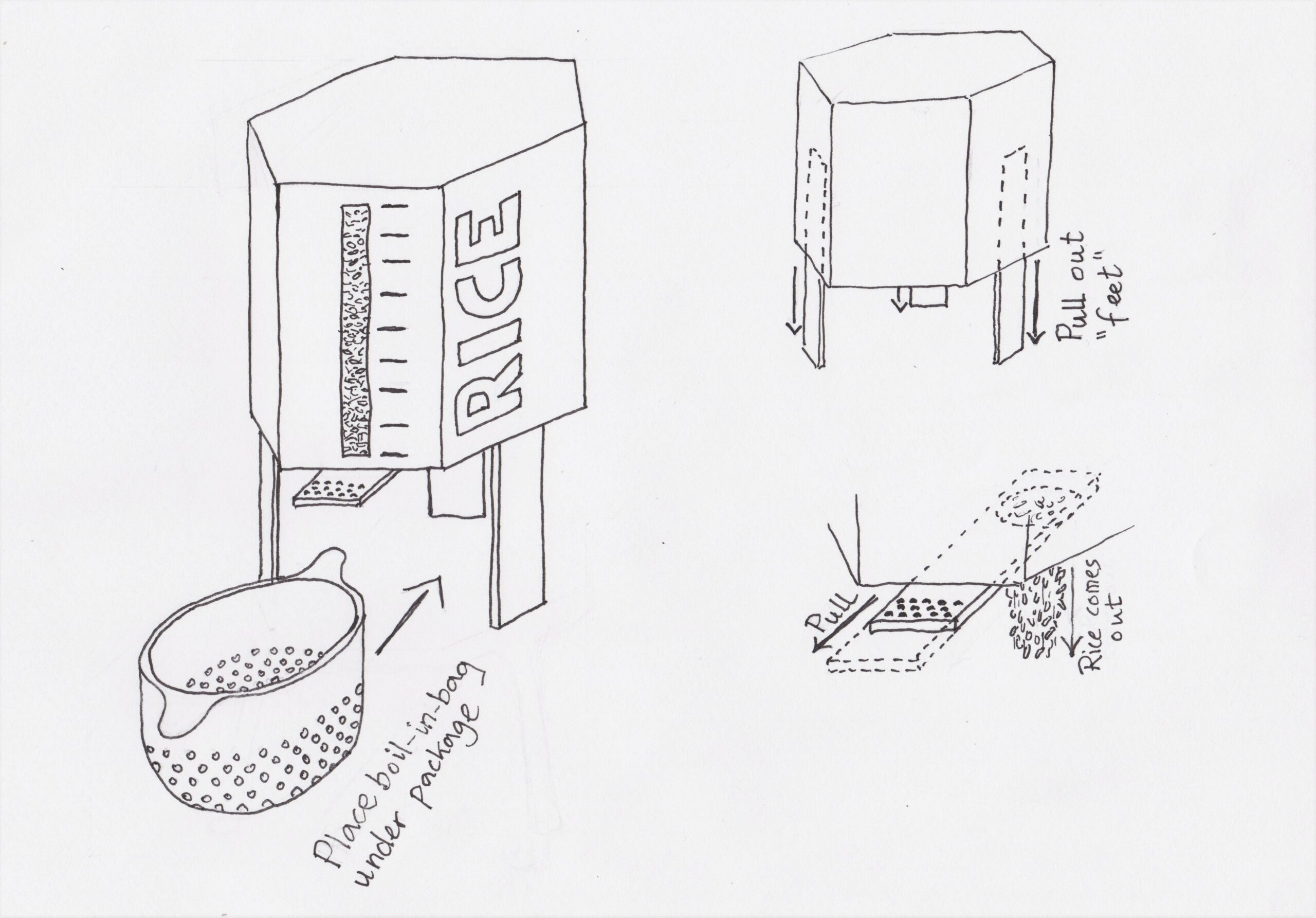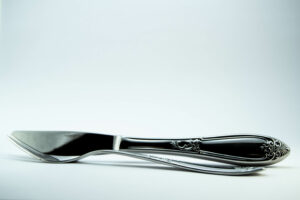Task: You have to design packaging for rice. The packaging has to be different from what is out there in the market. Apply each one of the SCAMPER techniques and do a write‑up on your findings. Then choose the option that you think would work best and do a sketch of what the packaging would look like.
Today there are many different types of rice packaging in paper and plastic. You can even get “boil-in-bag” which is pre-portioned rice bags in plastic that you just drop into the boiling water.
Substitute
Substitute the perforated tear-off opening on rice packages made out of paper/carton with a folding technique. Many of the packages tend to break when you try to open them.
Combine
Combine the rice packaging with a reusable “boil-in-bag” made out of plastic, almost like a colander that fits perfectly in a pot. In Norway for example, there are sold plastic lids nearby the liver pate (the canned ones) in supermarkets so that you can keep the food fresh. The same thing can be done beside the rice.
Adapt
Adapt the amount of portions in boil-in-bags to what people really need. I am a big fan of the boil-in-bags, but if I am going to make rice alone I only need one portion. The boil-in-bags sold today have an amount of two portions. By adapting the amount, it can contribute to less food waste.
Modify/magnify
Today you mostly find rice in boxes and bags. By modifying the shape of the packaging it can get a much more exciting and modern design. It can also stand out from the rest of the rice packages that are usually square-shaped boxes or bags.
Put to other uses
If the packaging design is made more modern and fancy, people would more likely have it on display in the kitchen. In that way, the rice package can be put to other uses as a part of the kitchen interior.
Eliminate
Like I wrote earlier, I am a big fan of the boil-in-bags, but they are not recyclable and has to be thrown in the garbage after use (according to Toro’s boil-in-bag). As we all know, plastic waste is a huge problem especially when it reaches the oceans. The boil-in-bags as we know them today, should be eliminated.
Reverse/Rearrange
Instead of having the opening on the top, why not reverse/rearrange the rice package and put the opening in the bottom? The package can stand on a type of tripod so you can put the pot underneath and just pour the rice into the pot with an open/close mechanism on the bottom.
My rice package
I ended up focusing most on the “reverse/rearrange”-technique of the SCAMPER-model where I rearranged where the opening would be. I got the inspiration from silos, which are big containers used to store bulk materials like grain (typically seen on farms). I also included the reusable boil-in-bag (as written under “combination”) and modified the box to be shaped like a hexagon.
The package is made out of cardboard except for the window in the front which is made out of plastic. On the front beside the window, there are lines for measuring how much rice you take out (1 portion for each line). Inside the walls of the package, there are three “feet” that you can pull out to make a type of tripod. This way, you can easy access the rice from the bottom. On the bottom in the front, there is a handle that you can pull out to release the rice from the package. As you release the rice, you can see on the window how much rice is released. There is also room for a reusable “boil-in-bag” (similar to a colander) under the package to easy fill it up without using a measure cup.




